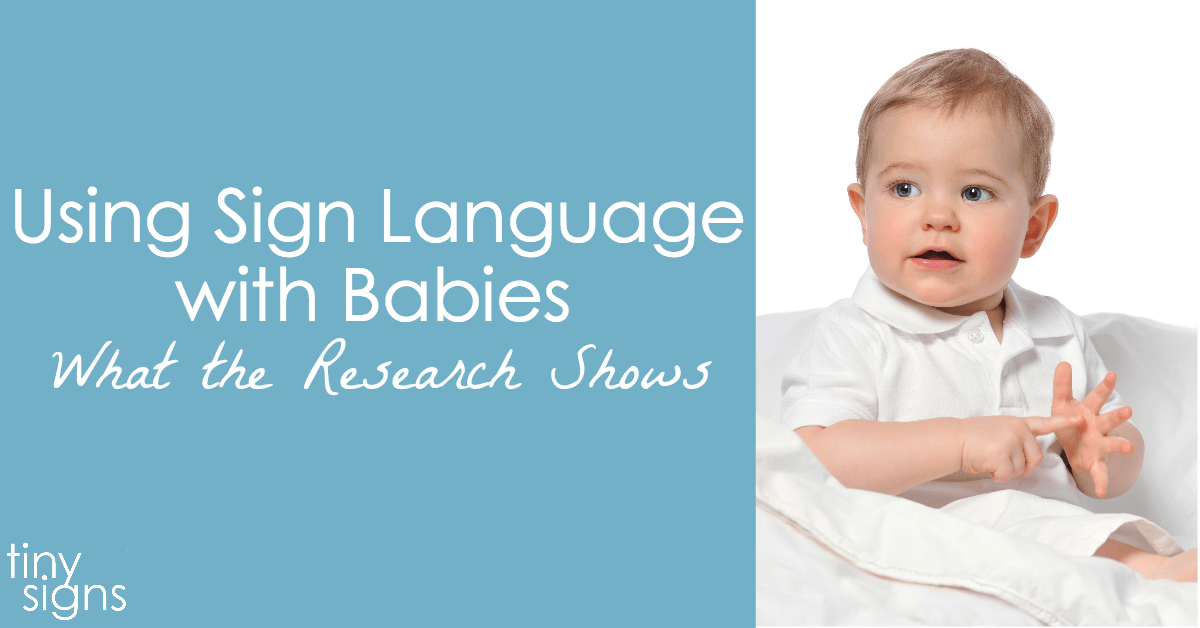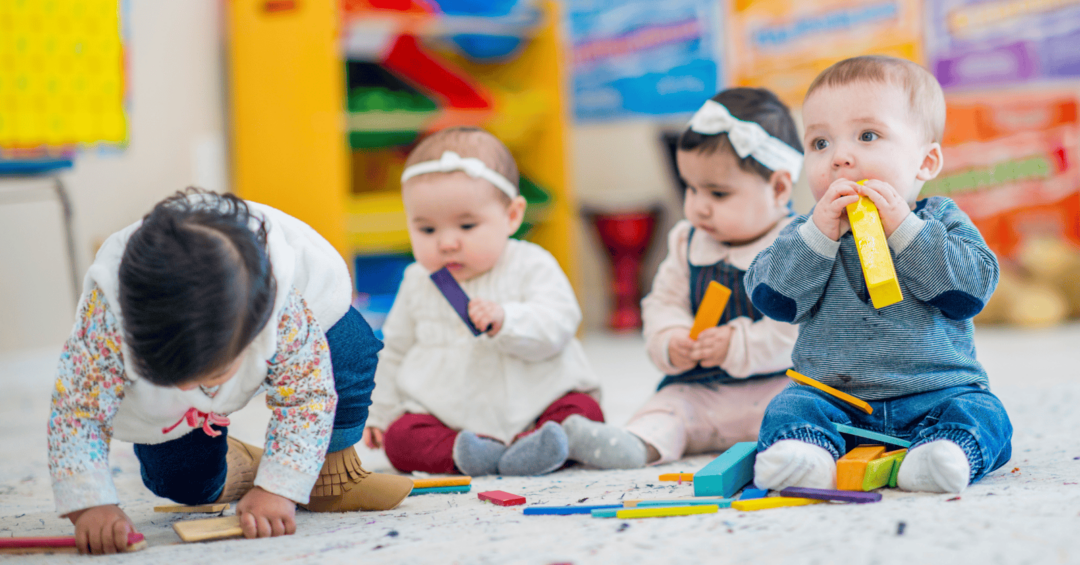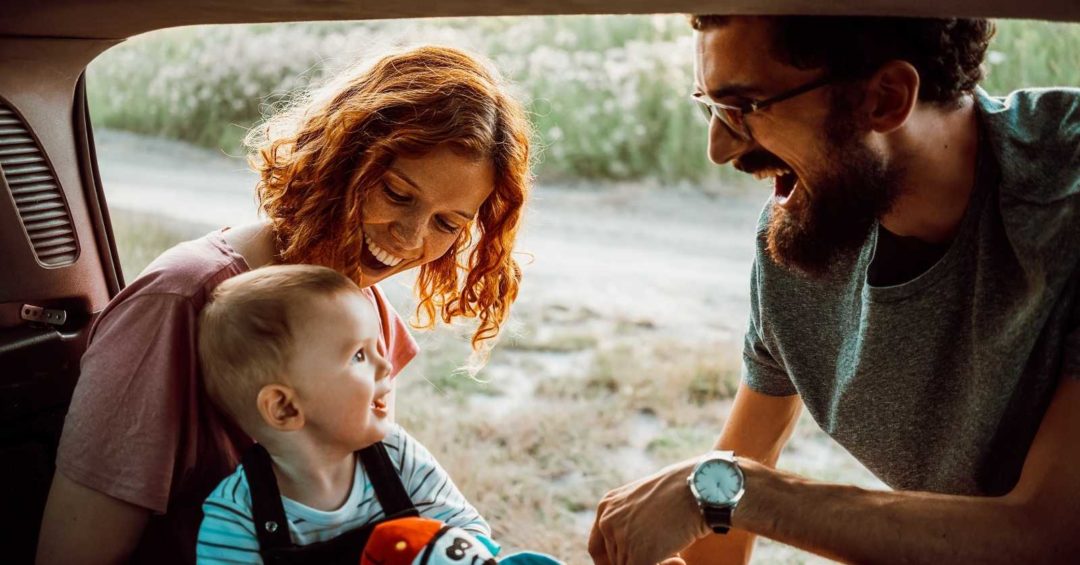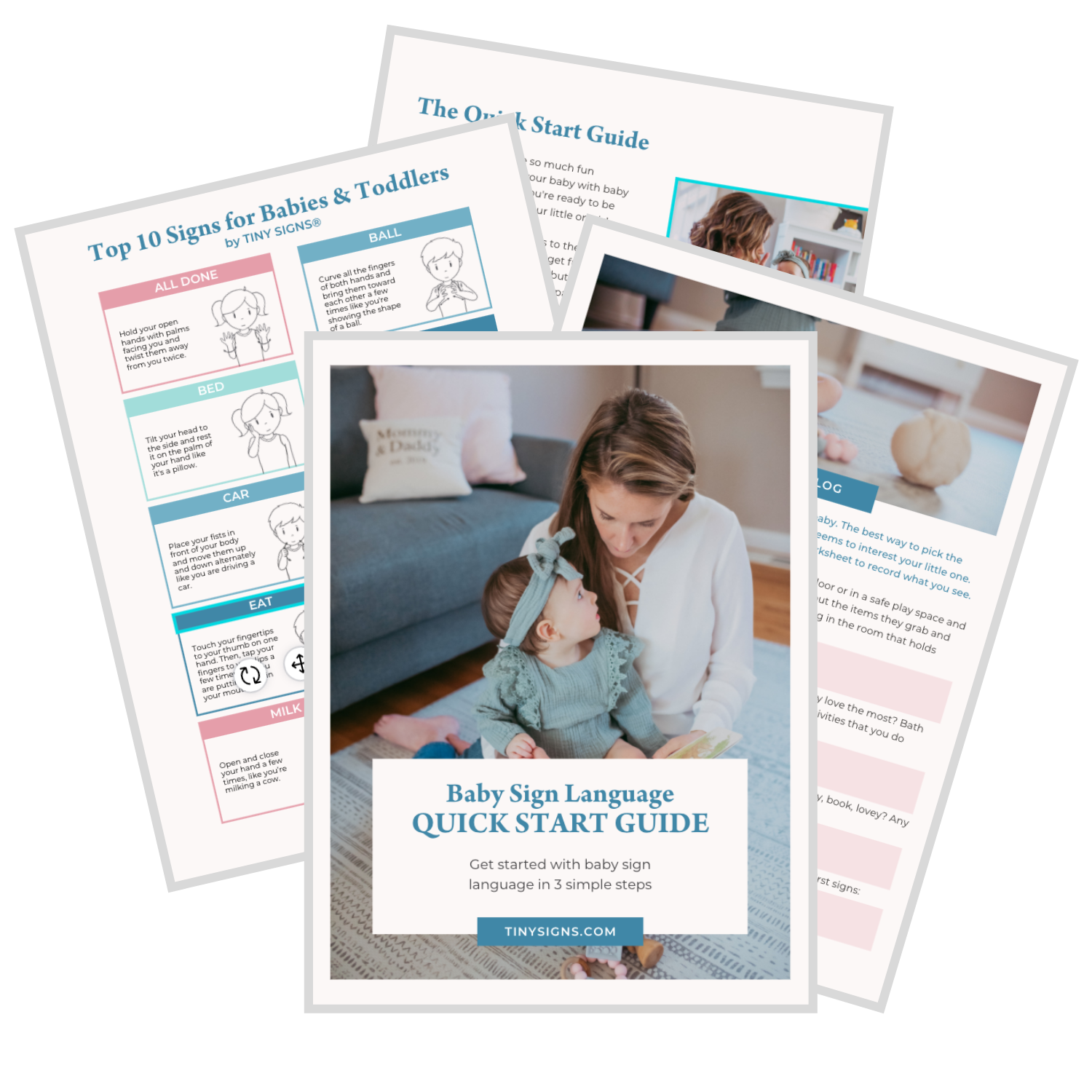I’ve shared more informal posts about the why signing with babies is so effective and what I love the most about signing with babies, however, I’ve had multiple requests for a more formal summary of what the research on baby sign language shows. In response to that request, I’m pleased to share the following summary…
Babies begin communicating from the moment they are born – using cries, coos & grunts to make their needs and desires known. As their bodies and minds develop, their communication evolves to include eye gaze and even pointing at objects that interest them.
Whether or not they are exposed to sign language, all babies communicate through non-verbal gestures. Most will wave, point, and even lift their arms to be picked up. Babies do this because their receptive language (what they understand) develops months ahead of their expressive language (what they can communicate). How does sign language fit in? Using sign language with your baby simply builds on this natural expressive ability.
Baby sign language is the practice of using this natural ability to communicate using gestures to facilitate quality communication before a baby’s ability to speak has developed.
How Signing Affects Language Development
A question that often comes up when discussing using sign language to communicate with an infant is “how will signing affect my baby’s speech development?”
Let’s take a look at the evidence: in research studies on using sign language with babies, none have shown that using signing causes a delay in language development. In fact, the overwhelming majority of research shows that signing has many positive short-term and long-term effects.
While there have been many studies done on this topic, the most influential research was conducted in the 1980s by researchers at University of California, by Drs. Linda Acredolo and Susan Goodwyn. This study was funded by the National Institute of Health and it was inspired by Dr. Acredolo’s personal experience with her own baby…
Dr. Acredolo noticed her infant daughter “blowing” at the fish in the aquarium at the pediatrician’s office. Later in the day, when putting her daughter down for a nap, Dr. Acredolo ‘activated’ the fish mobile above her daughter’s crib by blowing on it to make it spin. Realizing her baby was communicating the concept ‘fish’ by making blowing gestures, Dr. Acredolo (along with Dr. Goodwyn) went on to conduct one of the largest research projects on infants and pre-verbal communication.
The result of the National Institute of Health research project were nothing short of amazing! The researchers compared a group of 11 month old infants who were exposed to signs and gestures to a control group of 11 month old infants who were exposed only to speech only. Drs. Acredolo and Goodwyn found the following:
By aged 2, the group of signing babies:
- Had larger vocabularies
- Understood more words
- Had stronger language skills overall, and
- Used longer sentences
How Signing Affects Cognitive Development
Drs. Acredolo and Goodwyn followed up with the infants in their original study when the children were age 8 and found that the children who were signed to as infants had, on average, IQs that were 12 points higher than their non-signing peers.
Other notable research by Dr. Marilyn Daniels studied the impact of using sign language in the early childhood classroom (preschool and kindergarten). Her research focused on how signing affects literacy in hearing children. Her research found that young students in classrooms that incorporated signing into the lesson had many positive effects on young learners and that students in signing classrooms scored significantly higher on vocabulary test than the students in the typical classrooms.
Students in the signing classrooms
- Had better letter and sound recognition
- Were better spellers with larger vocabularies
- Had higher reading levels
Dr. Daniels concluded that signing had a positive impact on test scores and literacy skills because it accommodates multiple learning styles including auditory, visual & kinesthetic learning.
How Signing Affects Social & Emotional Development
Most child development experts will cite that frustration is the main cause of toddler tantrums and meltdown. Often this frustration stems from an inability to communicate and be understood. Using signing to facilitate communication during this challenging time can have an incredible impact on both infants and caregivers.
Some research has been done to study how signing impacts the parent-child relationship. Findings suggest that babies who sign receive better language feedback from their caregivers. For example, a baby who points at a new object might initiate a discussion about the object of interest with their mother.
Studies also suggest that parents who use signs with their babies experience less stress and frustration, and are more affectionate with their babies. Research also has shown that signing babies are more engaged and connected with their parents and initiate interaction more often.
From an evidence-based perspective, the body of research supporting sign language use with infants and toddlers is compelling. The number of studies itself demonstrate the interest and awareness of this enriching way of communicating with babies. In the course of research, popular doubts and concerns such as delayed speech from signing have been effectively debunked. Most importantly, the research helps to validate the curiosity and desire parents have to start communicating with their little ones much sooner than “mama” or “dada” is first uttered.
Research Summary of Benefits of Signing with Babies:
- Reduced frustration
- Improved communication
- Enhanced self-esteem
- Expanded spoken vocabulary
- Increased interest in books
- Higher IQ
 “Infant sign language really does deliver on its promise of improved communication.”
“Infant sign language really does deliver on its promise of improved communication.”
– The American Academy of Pediatrics
References
Acredolo, LP and Goodwyn SW. 1988. Symbolic gesturing in normal infants. Child Development 59: 450-466.
Acredolo, Linda P., and Goodwyn, Susan W., The Longterm Impact of Symbolic Gesturing During Infancy on IQ at Age 8, International Conference on Infant Studies (July 18, 2000: Brighton, UK).
Daniels, Marilyn, Dancing with Words: Signing for Hearing Children’s Literacy. Bergin & Garvey, October 2000.
Daniels, M. (1994). The Effects of Sign Language on Hearing Children’s Language Development. Communication Education, October, v43 n4, p291 (8).
Daniels, M. (1996). Seeing Language: The Effect Over Time of Sign Language on Vocabulary Development in Early Childhood Education. Child Study Journal, 26, 193-208.
Gongora, X. and C. Farkas, Infant sign language program effects on synchronic mother-infant interactions. Infant Behavior & Development, 2009. 32: p. 216-225.
Iverson JM and Goldin-Meadow S. 2005. Gesture paves the way for language development. Psychological Science 16(5): 367-371.
Claire D. Vallotton, Catherine C. Ayoub, Symbols Build Communication and Thought: The Role of Gestures and Words in the Development of Engagement Skills and Social-Emotional Concepts During Toddlerhood, Social Development 19:3,601-626 (August 2010)
Vallotton, C., Infant signs as Intervention? Promoting symbolic gestures for preverbal children in low-income families supports responsive parent-child relationships. Early Childhood Research Quarterly, Volume 27, Issue 3.







